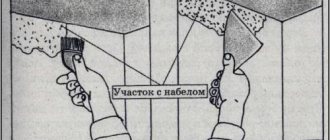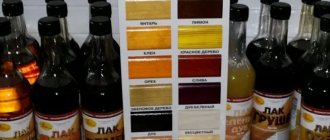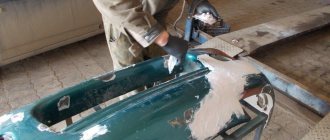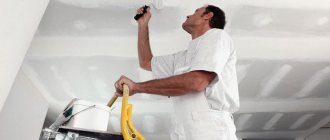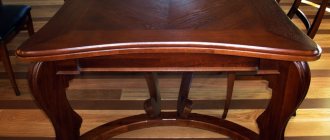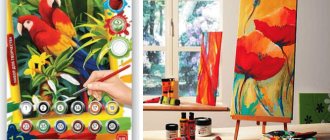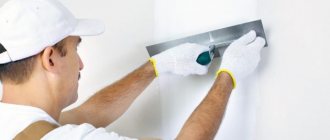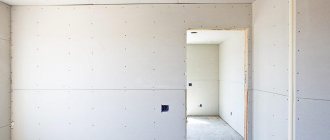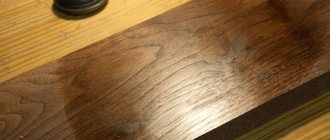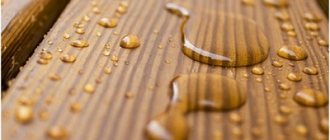Homemade cleaning products have many benefits. You will be able to fully control the composition of the product, and not add ingredients with strong odors or that cause allergies. It will also save you money since you can use simple and cheap ingredients like baking soda and vinegar. There are several recipes for creating a degreaser at home. With each of them, you'll get a product that will clean up kitchen grease, have minimal odor, no irritation, and be cheap.
Recently, the joining of parts is increasingly carried out using glue. At home, this method is used to carry out mainly repair work, while in production, various parts are completely manufactured. The quality of gluing always directly depends on the preparation of the materials, so many people have a question about how best to degrease the surface before gluing.
In fact, there is no universal remedy for this, and it all depends on the material of the parts being glued. Even taking into account the use of modern glue, which, according to manufacturers, does not require preliminary preparation, the strength and durability of the connection will be much better if the surfaces are pre-prepared and degreased.
Preliminary preparation
- rust;
- dust;
- leftover paint;
- scale and so on.
All these particles can interfere with the tight connection of parts, and therefore adhesion will deteriorate. Cleaning of bonded surfaces is usually carried out using grinders, metal brushes or sandblasters. In industrial workloads, parts are often processed using ionization or etching, but using these methods at home is unprofitable.
Sandblasting
After the surfaces have been cleaned before gluing, they are washed in clean water to remove small particles, dried thoroughly and degreasing begins.
How to degrease the surface before gluing? Typically used for this:
The main thing is to remember that even if there are no visible grease or oil stains on the surfaces, it is necessary to carry out the degreasing procedure. This is necessary to improve adhesion and joint quality.
Buy metal degreasing agent
Anyone can purchase a metal degreasing product at home. The price and method of using the special product are available to everyone. All problems with degreasing metal products and surfaces will be solved successfully and quickly!
Before painting or gluing wallpaper, the surfaces must be specially treated; there should be no grease film, dust, dirt, or remnants of previous coatings. Let's see what we can do to degrease the surface.
What is defatting? Dirt and dust on the surface significantly reduces the adhesion of the surface to the finishing material. The durability of the applied coating or the quality of adhesion will be poor. The glue or paint materials will bond not to the surface, but to the mud layer. They degrease metals, plastic, glass, wood and other materials for the reason that oil or fatty areas that are always present on the substrates also prevent the adhesion of paints or adhesives. Let's see what you can use to degrease surfaces before painting.
On video: why degrease the part before painting.
Degreasing metal parts
Most often, the answer to the question of how to degrease the surface before gluing metal parts is a common solvent, gasoline or acetone. To do this, the liquid is applied to a rag, which is then used to thoroughly wipe the entire area. It is best to work in protective clothing and a respirator, since caustic liquids can burn the skin or cause an allergic reaction. You can also degrease metal with regular vodka or white spirit. When processing small parts, it is recommended to completely immerse them in liquid for a few minutes.
Checking the result
To check the result of the work, it is necessary to carry out a wettability test. To do this, drop a little water on the treated surface and monitor its behavior. If the part is completely degreased, the drop will gradually spread over the entire surface in an even layer. If it remains in the shape of a circle, it means that the metal has not been completely processed and its surface still needs additional processing before gluing. This testing method is also suitable for plastic or inorganic surfaces, but not for aluminum and magnesium.
Wood, leather and rubber
To properly degrease wood, sometimes it is enough to simply remove the top layer of the part, if this is permissible. To do this, after thorough cleaning, the surface is treated with sandpaper or a plane until the oil layers completely disappear. It is important to remember that when deeply removing a layer from wood, there is no need to additionally degrease it. After processing with a plane, the parts can be immediately glued together.
Leather, wood, rubber
Such materials have a special composition - organic origin. This means that all kinds of pollutants accumulate on them. Dirt is deeply absorbed and difficult to remove. Chemicals such as acetone alone are unlikely to completely remove the contaminant.
You can clean wood efficiently in an easy way: simply remove the top layer of the part. Of course, if it is permissible.
Are used:
- Plane.
- Sandpaper.
Layers of wood are removed to the depth to which impregnation occurred. Oil stains should disappear completely.
YOU NEED TO UNDERSTAND! If a large layer of contaminated surface is removed from a wooden part, it will no longer require degreasing. Such surfaces will be reliably glued with a suitable composition.
Degreasing plastic
It should be noted that plastic does not bond well with other materials and to improve its adhesion it is necessary to carefully prepare the material. On a production scale, parts made from this material are increasingly soldered together, but at home it is very difficult to do this efficiently.
How to degrease the surface before gluing plastic? Typically, alcohol-containing liquids or acetone are used for this. As a rule, this treatment is sufficient, as can be verified by performing a wettability test.
After the test has been carried out on an inconspicuous area of the part and the safety of the liquid has been confirmed, you should saturate a cloth with it and carefully treat the entire surface to be glued.
Glass
Sometimes the question arises: “How to degrease glass?” For these purposes, it is allowed to use any detergents used at home for cleaning apartment windows. The proposed products will help you temporarily get rid of existing dirt on the glass and at the same time degrease them.
If you think that the glass is not in a clean condition, then use the same universal remedy - medical alcohol. There is simply no better remedy in all its guises.
degreasing before repair
When preparing metal products for painting or gluing, it is necessary to degrease the surface. Only after this the coating will be easy to apply and last much stronger and longer.
You can degrease metal at home using improvised means, but it is better to use a special degreaser.
Working with inorganic surfaces
How to degrease the surface before gluing ceramic tiles?
Any inorganic materials are less demanding in terms of the choice of liquid for processing, including:
They must be prepared for gluing according to the standard procedure: first thoroughly clean the surfaces of the parts from dirt, and then thoroughly degrease them. For the latter, you can use acetone, solvents, alcohol and any other suitable liquids. It is very important to thoroughly dry ceramic and concrete parts after each stage, since they are characterized by high moisture retention within themselves. It is better to degrease concrete with a perchlorethylene solution.
How to properly use nail degreaser?
High-quality “dead” adhesion between the nail and the decorative coating is ensured by thorough preparation in several stages. All types of degreasers used must be used correctly, following the following sequence:
- Neil prep (i.e. degreaser) . This is the first step to the perfect manicure. Before use, you need to remove the shine of the nail with a buff. Degrease the surface of the nail with the product. It can be applied directly to the nail and then wiped off with a lint-free cloth. You can soak a napkin with liquid and treat your nails with it.
- Dehydrator . The composition is not always applied. In cases of high sweating on the fingers, you cannot do without it. It is also necessary for the subsequent application of acid-free primer. Acidic does not require treatment of the nail with a dehydrator. The product is applied with a brush, then wiping the nail with a special napkin.
- Primer . Cover the nail with this product very carefully so as not to capture the periungual ridges (regardless of whether it is acidic or not). This should be done with a brush; there is no need to wipe it off.
Painted surfaces
In case of urgent need to glue painted parts from any material, their surface should be cleaned a little, making it rough for better joining. After this, the surfaces are degreased and glued together. Aggressive solvents in the form of solvents are not suitable for degreasing a painted surface, as they will simply damage the paint layer. It is best to use alcohol-containing liquids.
Degreasing agents
If a person decides to paint a surface in a house, apartment, or country house, any suitable product is used for degreasing, which is applied to a lint-free microfiber cloth or other suitable material.
This method is not suitable if preparation for painting the car body is required. Of course, it is better to entrust the cleaning and painting of a car to a professional who will do the job efficiently. In some cases, you can remove the grease film and protect the car body from corrosion with your own hands.
White Spirit
Almost every car enthusiast has the organic solvent White Spirit, and repair shops use it regularly. White spirit is intended for the initial treatment of the body, after which it is practiced to apply alcohol mixed with orthophosphoric acid to remove residual contamination. The solution is prepared by combining substances in a certain proportion.
Using white spirit you can safely clean car parts; the composition will not harm the metal surface. Low cost is another plus. The downside is the strong smell. Some car owners replace the solvent with trichlorethylene, but it should not be used on aluminum alloys - there is a risk of fire.
Gasoline, acetone, other analogues
All of these products are good solvents for grease, mastic, and paint. Diesel and kerosene have a rather dense structure and are difficult to clean, but their composition is suitable for degreasing.
After using kerosene, gasoline, or solvent, you will have to use an enhanced wash to remove all traces. It is undesirable to use acetone for treating cars - some types of it can cause harm to the metal.
Antisilicone
Antisilicone is a colorless liquid, a remover for removing silicone, grease, and oil. This substance is intended to remove contaminants from steel, aluminum, stainless steel, plastic, galvanization, and varnish coatings.
It is applied to the surface, then wiped with a dry cloth or paper towel. You need to wear a mask and gloves when working, and the room must be ventilated.
Antistatic
The surface can be degreased before painting using an antistatic agent. It is especially effective to do this on plastic, which attracts dust due to its ability to become electrified. It will be difficult to remove the grease film, but after treating the surface with an antistatic agent it will be much easier.
Alkalis
The preparations in this group contain detergent chemicals with an alkaline effect. They can wash away any contaminants, including grease. Usually used in everyday life.
To clean plastic and concrete, a roller is used for application. Before painting a car, use alkalis with great care, then rinse the surface thoroughly with water and dry the parts. Do not apply large amounts of product or create strong foam.
Ultrasound and other methods
A new method of surface cleaning is the use of solutions coupled with baths with an ultrasonic field. The method is suitable for degreasing small parts whose surface is uneven, has complex curves and includes various mechanisms (for example, watches). Due to the high cost, the method is not suitable for large products.
There is a method of electrochemical degreasing. It is also carried out in baths where gas is supplied from electrodes. Surfaces are cleaned with chemical solutions using current. Typically, such processing is used in production and industry.
Useful tips
A few little tricks will help you successfully treat your nails at home and shine with a chic manicure made by yourself:
- Remember, a degreaser, primer, dehydrator are not synonyms for the same product, but completely different products;
- An acid primer is not the best alternative to a degreaser; it is used for nail extensions. Improper use will lead to problems with the nail plates and difficulties in removing gel polish;
- The manufacturer does not matter much when choosing a degreaser; it also does not matter whether you subsequently apply shellac or gel; you can use the same product to treat your nails.
How to degrease plastic
Plastics are one of the largest groups of materials, containing a variety of types of plastic. Gasoline, acetone, and vinegar are perfect for a number of plastics; other materials will immediately become unusable from such substances. Universal compounds are also not always suitable for plastic.
For plastic car parts, only special products are used, which are sold in relevant stores and are suitable for plastic and rubber. At home, you can try applying white spirit to the material. An antistatic agent will be 100% safe; most products can be degreased well with vodka.
The procedure for degreasing plastic before gluing it is as follows:
- Wipe off the dust with a (dry) cloth, if necessary, wash to remove obvious dirt, and dry.
- Soak a rag with solvent.
- Gently scrub the surface.
- If in doubt, try scrubbing a small area of the product first.
How to replace degreaser at home?
Experienced nail service professionals prefer only professional manicure products in their work, fearing experiments and unpredictable consequences, so as not to risk their reputation in front of an established client base. But not all lovers of spectacular nails at home can afford them.
You can degrease your nails before coating not only with special liquids. There are many other substances that can replace them.
Boric acid.
Pharmacy alternative to replace standard degreaser. Able to degrease and clean the nail of all contaminants, while simultaneously disinfecting it. But it is not recommended to use the solution often, since the composition contains alcohol, which gradually dries out the nail. Using boric acid is simple: just moisten a cotton sponge or a piece of cotton wool with the liquid, then wipe your nails and the area around it.
Lemon juice.
A popular and proven way to remove fat from nails is lemon juice. If this citrus is not available, then it can be replaced with citric acid, having previously dissolved it (half a teaspoon per 100 g of water). But lemon juice or solution does not effectively degrease the surface of the nail, but is necessary to remove dirt from it. After moistening a cotton wool or sponge in the liquid, wipe the nails thoroughly.
Alcohol.
What is needed is medical alcohol without impurities. Vodka in this case will not be an alternative. Typically, alcohol not only degreases the nail, but also thoroughly disinfects it, preventing the development of fungi and other pathogens. After moistening a cotton pad with alcohol, wipe the surface of the nail. The systematic use of alcohol for degreasing is not recommended, as it greatly depletes the nail.
Soap.
Using soap for degreasing on a regular basis is not a very good option. Although it can be used to remove fatty deposits and dirt from the nail, it still will not be a reliable means of guaranteeing a long-lasting manicure. Using soap is simple: lather your hands, rinse under running water. If necessary, repeat the procedure.
Nail polish remover.
If the liquid does not contain acetone, then such a product can only partially replace a degreasing product. It ineffectively removes impurities, leaving some of the fatty deposits on the nail surface. To use the product, you need to apply it to a sponge (cotton pad, a small piece of cotton wool) and wipe your nails with it, as when removing nail polish.
Degreasing metal
In addition to grease and dirt, metal often contains rust, paint, and sealant residues. For metal processing you should choose white spirit, acetone, gasoline.
The procedure is as follows:
- Remove rust, paint, sealing residues with a grinder, manually, grinder, sandpaper - in any convenient way (the bathtub in the house is treated with a sponge and soda). It is better to clean large areas with a power tool.
- Moisten a cloth with solvent and treat the product until completely clean. If the parts are small, you can simply immerse them in solvent.
- After complete drying, you can apply primers and paints. Those areas that cannot be painted should be covered with double-sided tape.
Wood products
Wooden products must be cleaned of varnish and paint before painting. At the first stage, you need to clean the wood as thoroughly as possible with a wire brush, sandpaper, or a plane. The latter is used to remove the top layer if the paint is deeply ingrained - with high-quality work, you don’t even need to degrease the surface.
For wood, special products and universal solvents are used; they are applied with a roller. There is no point in using gasoline. After applying the composition, you can easily clean the surface and then proceed to painting.
Is it possible to degrease nails with vinegar?
Surely you have noticed that specialists in beauty salons carry out some manipulations with the nail plates before starting a manicure. The thing is that in order to obtain a beautiful and uniform coating on your nails, you must first clean them, sand them and, of course, degrease them. Degreasing is the last preparatory stage before applying varnish; special products are used in spa salons for this procedure.
Nail degreaser
If you decide to refine your hands and tidy up your nails at home, then most likely you won’t find professional cosmetics on your shelf, so you need to find an alternative.
You need to know this! Degreasing of nails must be carried out without fail, otherwise the adhesion of the nail plate and gel polish will be weak. The procedure is carried out immediately before applying the base coat.
Nail polish remover
Remedies before gluing
The choice of degreaser for the materials being bonded will depend on what materials are being used. This can be ordinary household chemicals, alkali, alcohol, or organic solvent. For rubber, isopropyl alcohol is suitable. The main thing is not to apply products to wet surfaces - upon contact with water, many substances give an unpredictable reaction or become ineffective.
There is nothing complicated in degreasing and subsequent gluing and painting of products. It is important to familiarize yourself with the necessary information, purchase a suitable solvent - then all work will be completed efficiently and without consequences.
After degreasing is completed, you need to drop a couple of drops of water onto the surface: if the liquid becomes flat and spreads, the cleaning is done perfectly.
Natural dishwashing detergents
Baking soda
Baking soda, which we commonly add to baked goods, is a safe and environmentally friendly means for degreasing and washing dishes. Moreover, only baking soda, and not technical (soda ash), is suitable.
Mustard powder
Mustard is another safe dishwashing detergent. Mustard powder degreases a large number of dishes well.
Hot water
In case you don’t have any detergents on hand, you can simply wash the dishes with hot water - it not only degreases, but also protects the dishes from various microorganisms.
Laundry soap
Regular laundry soap - brown soap - also has an antibacterial and degreasing effect. You can simply lather a sponge with soap, or you can prepare a universal detergent (laundry soap with soda).
Citric acid and vinegar
Citric and acetic acids are good if you need to remove scale from dishes. Moreover, it should be noted that industrial, and not natural, vinegar . Vinegar and citric acid also wash glassware well.
